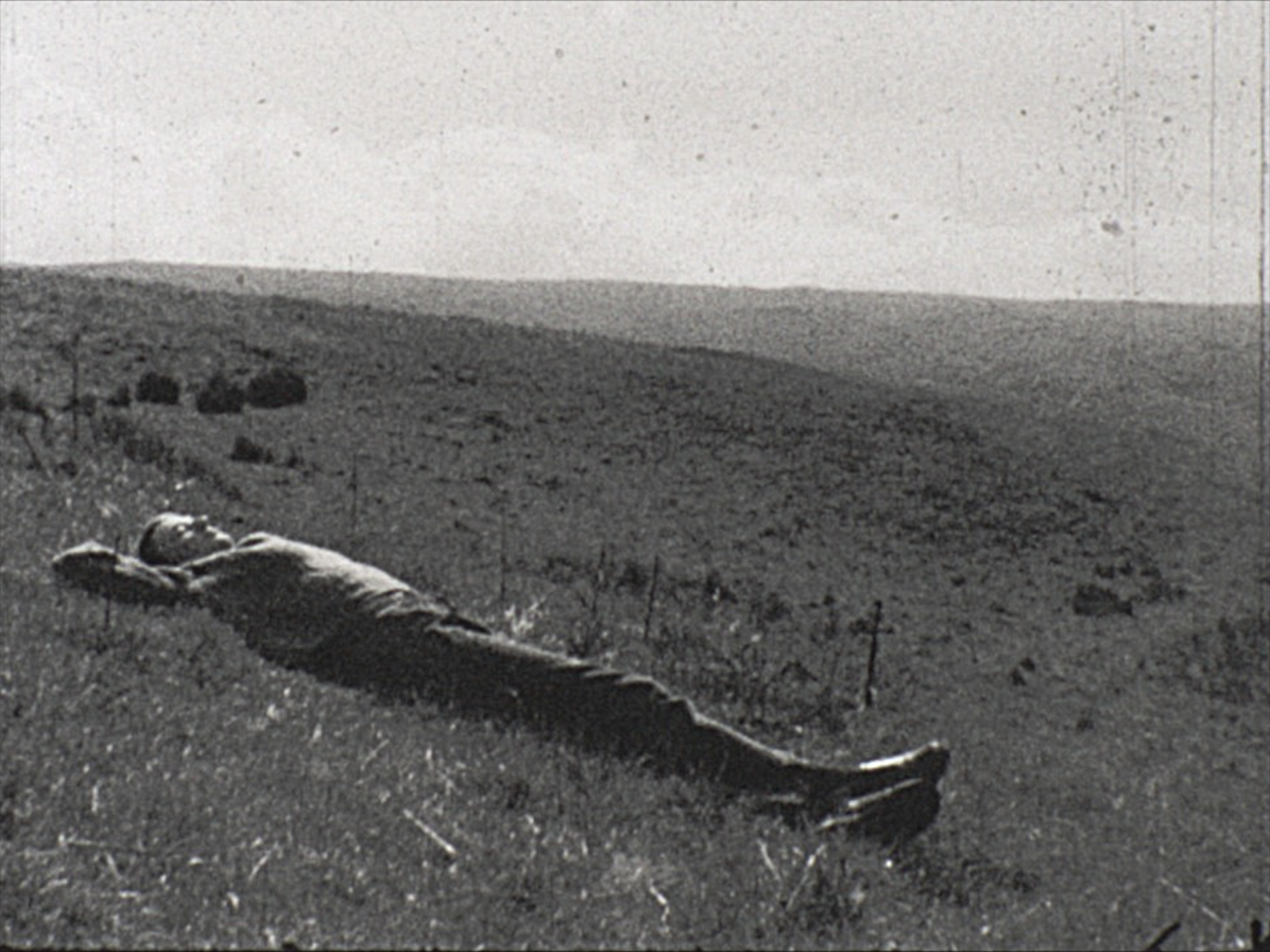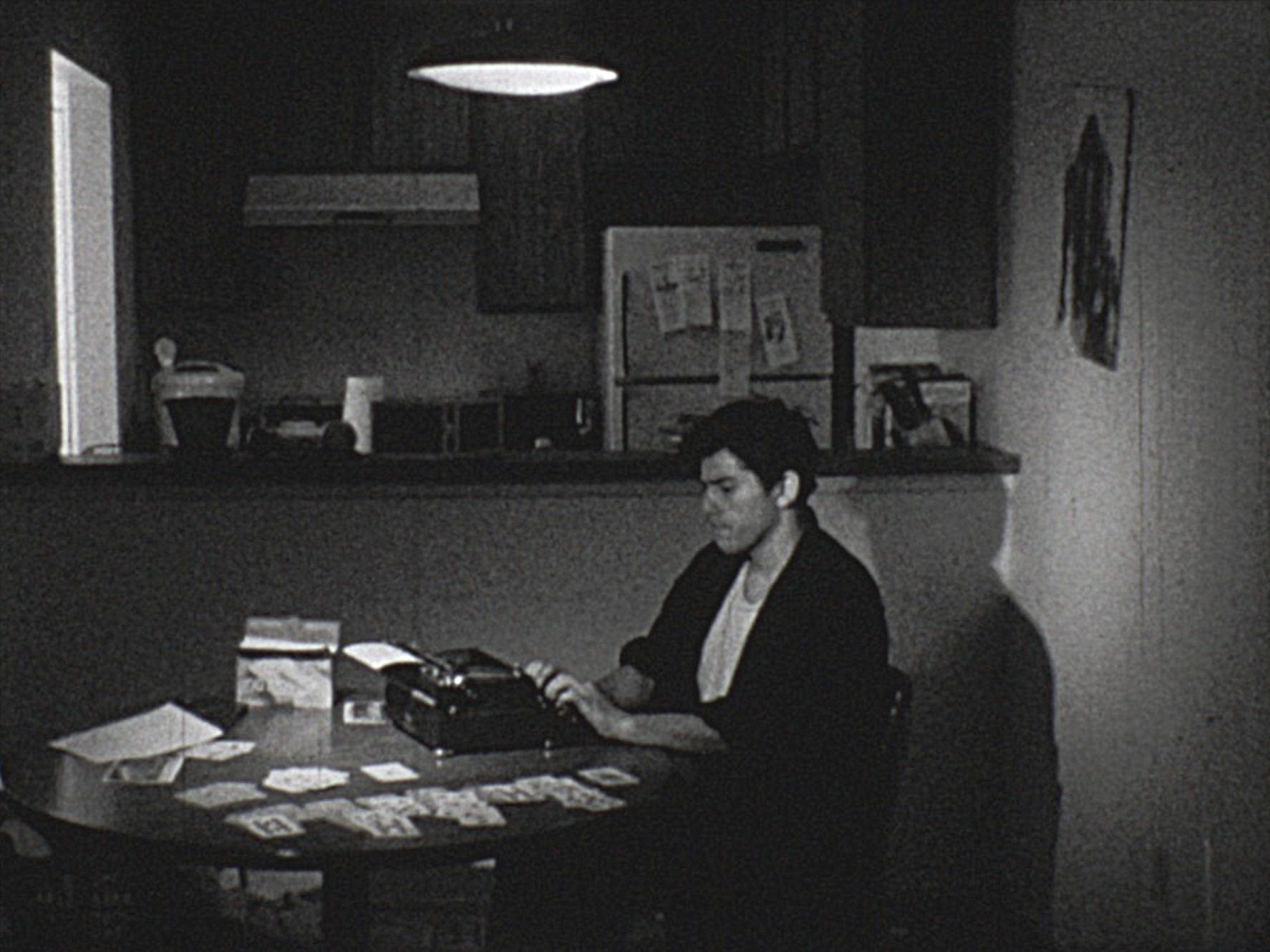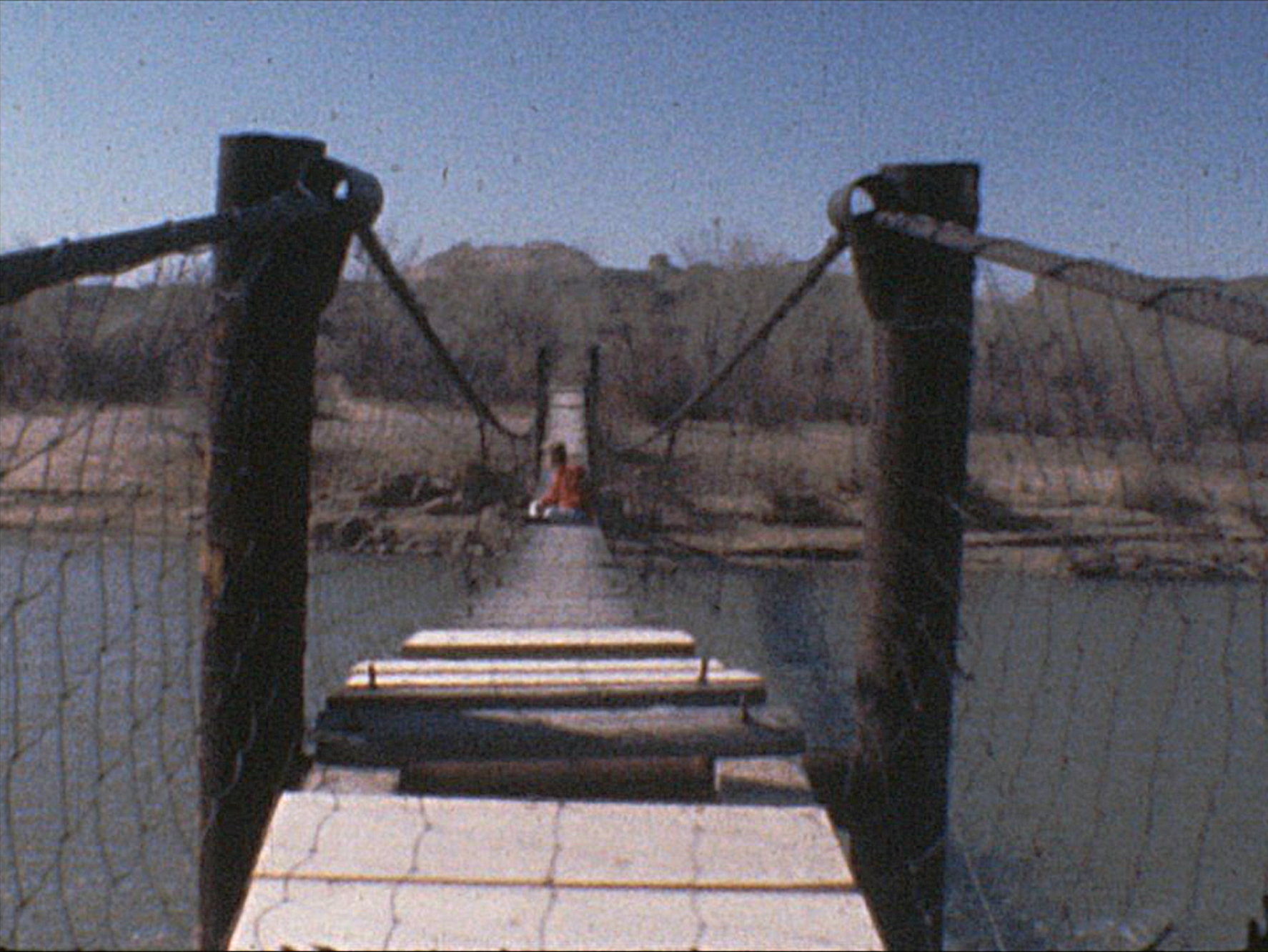Immeasurable Re-creation
Kevin Obsatz on his education as an artist, both as a student and teacher of filmmaking, and in his experiences outside the classroom.

The school system today performs the threefold function common to powerful churches throughout history. It is simultaneously the repository of society’s myth, the institutionalization of that myth’s contradictions, and the locus of the ritual which reproduces and veils the disparities between myth and reality.
Ivan Illich, Deschooling Society
My first screenwriting class at the University of Southern California (USC) was mandatory, and met one evening per week in the spring of my junior year, 1999. I was an immensely eager and motivated film student; I had finished my first feature screenplay a year earlier on my laptop in my dorm room.
I don’t remember the name of the professor (and I haven’t been able to find it with the limited information I can find on my transcript or the USC website), but he was likely younger than I am now—in his mid-30s probably. He explained to us on the first day of class that he’d never had a screenplay produced, but that his situation was not uncommon in Hollywood. He was successful as a playwright, had several screenplays optioned, and he had written a book about screenwriting, which was our required course reading. He explained, we would spend the semester learning screenplay structure, and then write the first act of a feature for our final project—about 30 pages.
After class that first day, I followed him out of the building, walking quickly along one of the main campus boulevards to keep up, and presented him with a paper copy of my screenplay: 112 pages, professionally formatted, three-hole punched, and held together with long brass fasteners, as was the industry standard.
He glanced at it, handed it back. “It’s not supposed to have scene numbers yet,” was all he said. It quickly became clear to me that he would not read it. Still early in the USC film program (which begins midway through students’ sophomore year), I remember feeling confused by his immediate lack of response—surprised and rejected. My fury simmered all semester long. At some point, weeks later, he shared with us that he sometimes worked as a freelance consultant with screenwriters for a flat rate of $600 per script, which I found appallingly unjust. I was there on scholarship, but weren’t we theoretically all paying more than $2000 for the privilege of spending a semester with this guy? And didn’t he care enough, as an educator and a shaper of young minds, to at least give my screenplay a quick skim?
USC has a massive film program, and in that era it was spread over four primary disciplines: film production, critical studies, screenwriting, and a smaller, graduate-level producing program. I imagine the school has changed in the 15 years since to reflect the changing industry, likely with far more emphasis on interactivity, new media, and television. In those days, the production program alone processed 50 undergrads per semester. According to USC’s published statistics, they have a total of around 1600 degree-seeking students enrolled, at the undergraduate and graduate level, in any given year.
In my time there, I knew I loved movies, that I wanted to make movies, and that I was in one of the best places in the world to do it. Like most of my peers, my head was full of stories of prodigies from film history—many earnest conversations took place in the cafeterias and garden plazas around campus, about everyone from Orson Welles (directed Citizen Kane at 25) to John Singleton (alumni, directed Boyz ‘N the Hood at 23), and, of course, George Lucas (alumni, directed the feature film THX-1138 at 27). We’d sit and discuss the relative strengths and weaknesses of various directors, and our plans for taking the film industry by storm as soon as we passed through USC’s hallowed gates with our degrees… if not sooner.
We also complained incessantly about the school while we were there, which is only natural, I suppose, for precocious 20-year-olds in any institutional setting. We were steeped in the mythology of Hollywood from hundreds of hours spent at video stores, watching our favorite films again and again on VHS, and reading magazines from the pre-internet era, such as Premiere and Entertainment Weekly.
It’s perhaps true in many professions, but it’s especially so in film: it’s pretty much impossible to work professionally in the industry and teach at the same time. (Unless you’re James Franco, that is.) If you work in any capacity in production or post-, working on film projects is both all-consuming and unpredictable, so it’s impossible to commit, even a few months in advance, to a regular schedule of showing up for a weekly class. So, many of my professors were either older and semi-retired or younger, with mysterious credentials. For instance, a professor might introduce themselves as having worked in documentary television production, but would do so without either sharing their own work or getting specific about when they had worked, where, or in what capacity. (These were the days before a few keystrokes on IMDB could pull up someone’s entire filmography.) I was oblivious to the workings of the academic world at that point, but it’s pretty obvious to me now that most of the teachers in those lower-level courses were either adjunct or grad students; the tenured faculty focused their energy, then as now, on the larger seminars and upper-level classes.

I have some fond and formative memories of my undergraduate education, but I only remember the names of a handful of my professors; I had meaningful interactions with even fewer. I did not find anyone resembling a mentor in my four years at USC, and I’m certain that none of my former professors has even a fleeting memory of me, given the fast-flowing current of hundreds of students passing through that institution every year.
I have more empathy today for that nameless, adjunct screenwriting teacher, though I still don’t like him. I was a blip on his radar, an uncomfortable presence he had endure once a week for a few months, staring daggers at him from across a conference-room table, expecting special treatment and as yet unaware of the vast and uncaring industry I was about to enter. He was trying to survive as a writer and a teacher in Los Angeles; he may have had a family to support, for all I know. I wonder where he is today; is he still toiling away there, or did he bail a long time ago? I certainly couldn’t find him on the current faculty page for USC.
It’s pretty much impossible to work professionally in the industry and teach at the same time. (Unless you’re James Franco, that is.) Working on film projects is both all-consuming and unpredictable, so it’s impossible to commit to a regular schedule of showing up for a weekly class. So, many of my professors were either older and semi-retired or younger, with mysterious credentials.
I imagine that USC, with such a strong brand and a high volume of eager film students, was an early adopter of the university business model which favors outsourcing most of the teaching of undergrads to contingent faculty. Having spent some more time in academia myself since then, I would guess that many of those part-time teachers cobble together a living teaching at UCLA, AFI, Santa Monica City College, and/or any of the dozens of other institutions of higher education in Southern California.
As an ambitious and opinionated young filmmaker, I grew to resent a lot of these teachers, who seemed to have very little to offer in the way of actual filmmaking experience. If I have anything to thank them for, it’s their part in toughening me up, making me willing and able to walk into class to screen a film with my head held high, fully expecting and anticipating much of the half-hearted and lackluster feedback I’d surely receive.
Once a man or woman has accepted the need for school, he or she is easy prey for other institutions. Once young people have allowed their imaginations to be formed by curricular instruction, they are conditioned to institutional planning of every sort. “Instruction” smothers the horizon of their imaginations. They cannot be betrayed, but only short-changed, because they have been taught to substitute expectations for hope. They will no longer be surprised, for good or ill, by other people, because they have been taught what to expect from every other person who has been taught as they were.
Ivan Illich, ibid
But there was an aspect of my education at USC for which I am truly grateful: the classes forced us to make films, quickly and steadily, generating lots and lots of finished projects every semester. My favorite class in the Production program, which was counterintuitively taught by some my least favorite adjuncts, was the intro-level production course, called simply “290.” Those were the last days, at USC, of shooting intro projects on Super-8 film, before everything at the intro level (and most of the advanced projects as well) went digital. In 290, fifteen students had to complete five films each in 15 weeks, on a three-week rotating schedule—we watched five student projects per week, all semester long.
We had to find our own cameras and splicers, pay for our own film stock, and for the processing. Most of my projects involved four to eight rolls of film; a roll was three minutes, so I was working with only 12-24 minutes of raw footage for each project. The film stocks were not very light sensitive, so we had to haul around small but heavy three-light kits, all jammed into a plastic egg crate.

It wasn’t uncommon for the films to be underexposed, out of focus, and/or downright incoherent, but almost everyone in the class turned them in like clockwork, right on time throughout the semester. With so little film, we had to plan out our shots and lighting carefully—do a few takes, and move on. We dropped film off at a window on campus, and it was sent off for processing overnight. We’d go back to the window first thing in the morning, when the fresh batch of processed film was returned. We would pay, and then unspool the first few feet, hoping to see some kind of visible, tiny images in the frame, and then breathe a sigh of relief that we, at least, had something to work with for that project.
Most of my friends, and many acquaintances, appeared in one or more of my student films. I acted, poorly, for a few other people as well. We were educating ourselves and each other in the process while we worked, outside of class. And class itself, at least as I remember it, was basically an afterthought—the least interesting part of a week filled with writing, storyboarding, persuading friends to help, finding locations, shooting, and editing late at night, strips of Super-8 film taped to the wall, running shots back and forth through a simple viewer, making cuts and splices, and regretting previous cuts.
The teachers were, in fact, teaching us that we didn’t need them at all. What we needed was a community—a few people willing to help us out—basic knowledge of our equipment, and a deadline, when we’d have to screen our work for an audience and suffer through their judgments.
Film school didn’t make me into a filmmaker. I was making movies before that, starting in high school, with VHS or whatever I could get my hands on. But film school helped me to develop an ongoing and steady practice of making movies in community—regardless of teachers, audience, funding, rewards or awards.
I’m sure I was obnoxious as a young filmmaker. I can’t imagine teaching a class full of students like me: dismissive of my expertise, and actively resentful of any intrusions into their self-education. It sounds awful, actually. I wonder, thinking back to that screenwriting teacher, if I reminded him of a younger version of himself. Or, perhaps, he didn’t think of me at all, outside of the couple hours per week that we were forced to spend together.
When it came time to hand in our final project for the semester, 30 pages of the first act of our screenplay, I slapped a 78-page draft on the table, writing I had been working on feverishly in the final weeks of the semester. Technically, that’s a little short for a feature, which is supposed to be 90-plus pages, but it rounded up respectably, as a first draft, I thought.
I remember a silence in the room. My teacher looked at it; he looked at me. “This was all written during the semester?” he asked. I said it was. He let me know that he would only be giving feedback on the first 30 pages. I didn’t care. It felt like a moral victory to me.
The institutionalized values school instills are quantified ones. School initiates young people into a world where everything can be measured, including their imaginations, and indeed, man himself. But personal growth is not a measurable entity. It is growth in disciplined dissidence, which cannot be measured against any rod, or any curriculum, not compared to someone else’s achievement. In such learning one can emulate others only in imaginative endeavor, and follow in their footsteps rather than mimic their gait. The learning I prize is immeasurable re-creation.
Ivan Illich, ibid.
In the next few years, I wrote several more feature-length screenplays, and submitted them for grants and fellowships; I got past the first round of a few competitions, and had informal meetings with friends and colleagues about the possibility of actually producing them. I never won anything for my writing, I never got a screenplay produced or made one of these narrative features myself—it would have cost, in those days, at least $50,000, even on the cheap.
But I did keep making movies. I bought an $1100 DV camera with money earned working at National Camera Exchange. I wrote short screenplays and made them into films, and I filmed anything that looked interesting to me—even if the footage was ultimately destined to lived on a tape on a shelf, and later, a hard drive. Sometimes, I had a crew of a dozen people; sometimes the film was just me and an actor or two—sometimes it was me alone.
None of those projects was ever terribly popular, or successful, or viral. But even to this day, not a year has gone by when I haven’t created and shared one or two or a dozen moving image projects, made alone or in collaboration.
During my senior year at USC, I worked in the sound department—a pleasant, fairly mellow, nerdy place to spend time. Sound equipment was all in the process of going digital at that time as well, so we worked with everything from Protools software to audio cassette recorders to CD sound effect libraries to Nagra reel-to-reel recorders and hand-spliced magnetic audio, synched on a Steenbeck flatbed editor. I enjoyed working with sound, and during that year I took a few random freelance jobs on small projects. Independent filmmakers and grad students in desperate need of sound crew would often randomly call USC with urgent, paying jobs for students.
One evening, I met a friend for dinner who had graduated a couple years earlier, and he showed me around the facilities where he was doing dialogue editing at a post-production sound studio quaintly called “Miles of Fun” sound, working on surprisingly large-scale productions like, that day, Forces of Nature with Sandra Bullock. Impressed with his legitimate, steady, decent-paying film industry job, and with reasonable qualifications for a 21-year-old, I asked him if he thought I could get a job there, too. I still remember exactly what he said and how he said it – with a slight air of resignation: “Kevin, you don’t want to work here. If you’re going to make movies, you should go make movies.”
So, I did. These days, that friend is one of the most sought-after sound designers in the industry, working on big blockbusters, one after another. He has a beautiful house with a view of the LA skyline and at least one Oscar nomination. But as far as I can tell, he doesn’t make movies anymore. I’m pretty sure he’s not writing, directing, or producing them—and I wish he did. I’m not judging his career choices against my own, and I’m not assigning relative artistic merit to our respective paths. I don’t think I’d be good at what he does, and I can’t say whether he would be good at, or would enjoy, what I do every day. But I miss seeing the movies he might have made.
People who submit to the standard of others for the measure of their own personal growth soon apply the same ruler to themselves. They no longer have to be put in their place, but put themselves into their assigned slots, squeeze themselves into the niche which they have been taught to seek, and, in the very process, put their fellows into their places, too, until everybody and everything fits.
People who have been schooled down to size let unmeasured experience slip out of their hands. To them, what cannot be measured becomes secondary, threatening. They do not have to be robbed of their creativity. Under instruction, they have unlearned to “do” their thing or “be” themselves, and value only what has been made or could be made.
Ivan Illich, ibid.
Film school didn’t make me into a filmmaker. I was making movies before that, starting in high school, with VHS or whatever I could get my hands on. But film school helped me to develop an ongoing and steady practice of making movies in community—regardless of teachers, audience, funding, rewards or awards.

On some level, I’m sure it’s a good thing that I didn’t achieve great professional success in my 20s– that (insufferable?) young filmmaker certainly wasn’t ready for it, it wouldn’t have gone well for him. That screenwriting teacher in some ways probably knew me better than I knew myself; he could see that I didn’t actually need encouragement, but a check to my ego. In some ways I wish he had been more blunt and forthright about it, though I suppose telling uncomfortable truths to undergrads is not a wise career strategy for adjuncts. All things considered, his decision to tersely avoid conflict with me was probably utterly necessary, from his perspective.
In the last few years, I’ve earned a living mostly from teaching in the Art Department at the University of Minnesota. Like the unnamed screenwriting teacher at the beginning of this piece, I have a finite number of hours in the day and in the week. My students don’t approach me with feature-length screenplays very often, but I try to give them as much of my time and attention as I can spare, responding with encouragement and/or honesty, as the situation warrants. I’ve written quite a few recommendations; I’ve been a reference, and I’ve even occasionally shown student work at Cellular Cinema, an experimental film screening series I curate.
Mostly, I try to instill the values that I’ve learned as a filmmaker at USC and elsewhere: That grades, quantifiable metrics of success, and the approval of authority figures really don’t matter at all. What I learned in film school ultimately boils down, not to anything any professor said during those four years, but to the words of my friend, in the darkened machine room full of blinking lights and softly humming drives processing digital audio files of Sandra Bullock’s voice: if you’re going to do it, you just need to keep doing it— and anyone who tells you differently is probably selling something.